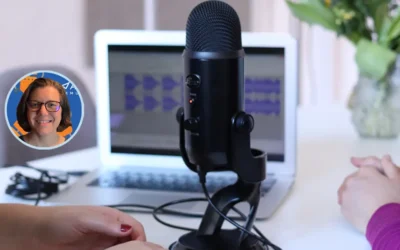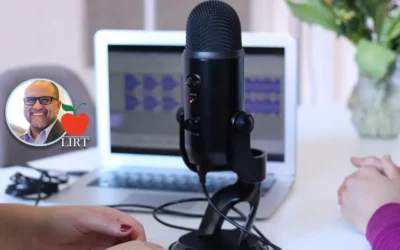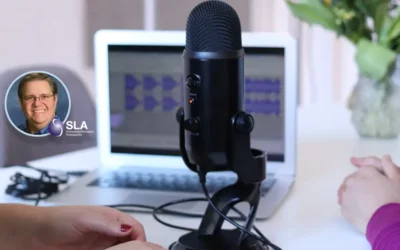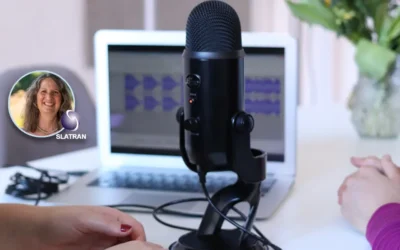Librarians and Technology #4: Troubleshooting Steps for Librarians
Miriam Kahn, MLS, PhD
Troubleshooting and testing follows evaluating, reviewing, and recommending technology. Troubleshooting is similar to beta-testing in that you are putting the software or database through its paces to see how it responds.
We’ve all been there and dealt with very frustrating questions of “I know this works but now it’s not working!” or “I was able to do this yesterday, what’s going on here?” The most frustrating question is “why can’t I do this?” If you haven’t encountered this problem with a database or piece of software, count yourself lucky.
Defining Troubleshooting vs. Beta Testing by Librarians
Troubleshooting usually entails figuring out why a feature or process isn’t working. It’s a response to a complaint from staff, researchers, and users. If you’re lucky, identifying the problem and determining a solution can be as simple as a keystroke, but it’s usually a head-scratching problem. Troubleshooting requires listening carefully to the problem description and replicating it—before identifying a solution or even a work-around.
Beta-testing is often part of the evaluating and reviewing process, where you either create a subset of a data and see how the database or software retrieves the information, or you test various parts and routines of software and databases to understand how it works or doesn’t. Beta-testing can consist of ‘trying to break the system’ or, more importantly, learning how the technology works most efficiently.
Beta-testing is particularly important when you are developing new software, adding a new module, or modifying an existing database. While programmers test as they go, it’s important for information professionals to also test before purchasing and releasing databases to researchers.
Troubleshooting Tip 1: Parse the Problem
Troubleshooting is the type of testing that is triggered by a complaint from a researcher that something isn’t working properly. The user’s complaint revolves around a piece of technology that doesn’t perform as it should or, most often, isn’t working the way it did yesterday. This cry for help is just that: a serious request to help the user accomplish their research. At the time of the request, your researcher is probably frustrated and may be upset or, at the very least, unhappy.
As information professionals, we know the ins and outs of the database, software or hardware. We are supposed to know how the technology works in all its phases and across the various interfaces. Information professionals must acknowledge that the researcher has attempted to solve the problem yet cannot find the solution. Identifying the problem is the first of common troubleshooting steps for librarians to use when helping our users.
Step 2: Listen to the User
Use Active Listening skills when parsing the problem. Pay careful attention to the researcher or internal user. Listen for the following:
- What is not working?
- When does the problem occur?
- What happens or does not happen?
- What is the researcher attempting to do?
- How did the researcher get to that place (URL or screen) in the database?
Other crucial questions to ask:
- Which interface is the researcher using? The desktop/laptop version, the mobile version, an app, or a specific browser?
- Are they searching from their office or from outside the institution’s secure network?
Using these facts, the next step in troubleshooting is to figure out what’s going on with the technology and why it is not working as expected.
Step 3: Replicate the Problem
As part of Active Listening, confirm the user’s problem and find a solution by first trying to replicate the researcher’s actions. From there, work on a solution.
In this age of mobile searchers, we must recognize that different interfaces perform the same operations differently. It’s possible that a function in one interface doesn’t exist in another. As you try to replicate and troubleshoot the problem, make certain you are testing from the user’s interface, browser, perspective, and point of view.
Always work from the external user’s interface. In many instances, information center staff use a completely different one. Recognizing differences and limitations of the different interfaces and users will speed up the troubleshooting process.
Troubleshoot from the User’s Perspective
Once you can replicate the search problem, work logically and efficiently to find the solution. Test one solution at a time. Document as you go.
- Can you access different interfaces at the same time? Try using different browsers or different windows.
- If you can log into the database using one password on multiple computers, browsers, or windows, then do so. Search for a solution in all the different modes and interfaces.
Keep in mind that as an information professional, you might have different privileges or permissions than internal or external researchers.
Some possible solutions might be: spelling, incorrect use of Boolean logic or punctuation (parentheses, quotation marks, or wildcards), or the use of natural language as opposed to controlled vocabulary. In some instances, solving the problem may be as simple as refreshing the cache or dumping cookies. In other instances, the feature may not exist in that particular mode or interface.
As mobile and app access to databases become more prevalent, it’s essential to recognize that certain functions and operations in the desktop do not exist in the mobile versions. In that same vein, it may be more cumbersome to work in the mobile version than in desktop mode. The operation of each interface may vary greatly even if it is possible to perform the same functions in both desktop and mobile modes.
Document the results of your troubleshooting so you can discuss them with Information Center staff and with researchers. If the issue is a persistent one, you might consider additional training or an institution-wide memo outlining the solution.
Troubleshooting Steps for Librarians: Summing it Up
Whether you’ve been using a piece of technology (hardware, software, or database) for a while or it’s new to your institution, it’s those frantic calls asking for help that challenge experienced information professionals to figure out why something isn’t working properly. Defining the trouble, replicating the situation, and finding a solution are integral to troubleshooting and key to keeping our users and researchers happy.
Listen actively and patiently, replicate the trouble or problem, then test logically, step-by-step, to identify the solution and thereby help your perplexed and temporarily frustrated researchers.
My next blog post will look at how multi-tasking is aided or hindered by technology.
Similar Posts
Interview with Susannah Barnes about the SLA Data Community
Susannah Barnes is the Co-Lead of the Data Community for the Special Libraries Association. If you work with data in any capacity, this interview will be of interest to you.
Interview with Victor Baeza about ALA’s Library Instruction Round Table
Interview with Victor Baeza, President of LIRT, about how it benefits from and supports special librarians whose roles involve teaching or training.
Interview with Eugene Giudice, SLA Treasurer
Interview with SLA’s Treasurer about the future of the special library profession and how the Special Libraries Association can benefit librarians
Interview with Cara Marcus on Transportation Librarianship and SLA
Interview with Cara Marcus, the president of the Special Libraries Association (SLA) transportation community about transportation libraries and SLA
Hosting service
Enjoy all of the benefits of your Lucidea solution with secure, reliable, stress free hosting
Programs & incentives
No matter your size or budget, we’ve got you covered, today and tomorrow




Leave a Comment
Comments are reviewed and must adhere to our comments policy.
0 Comments